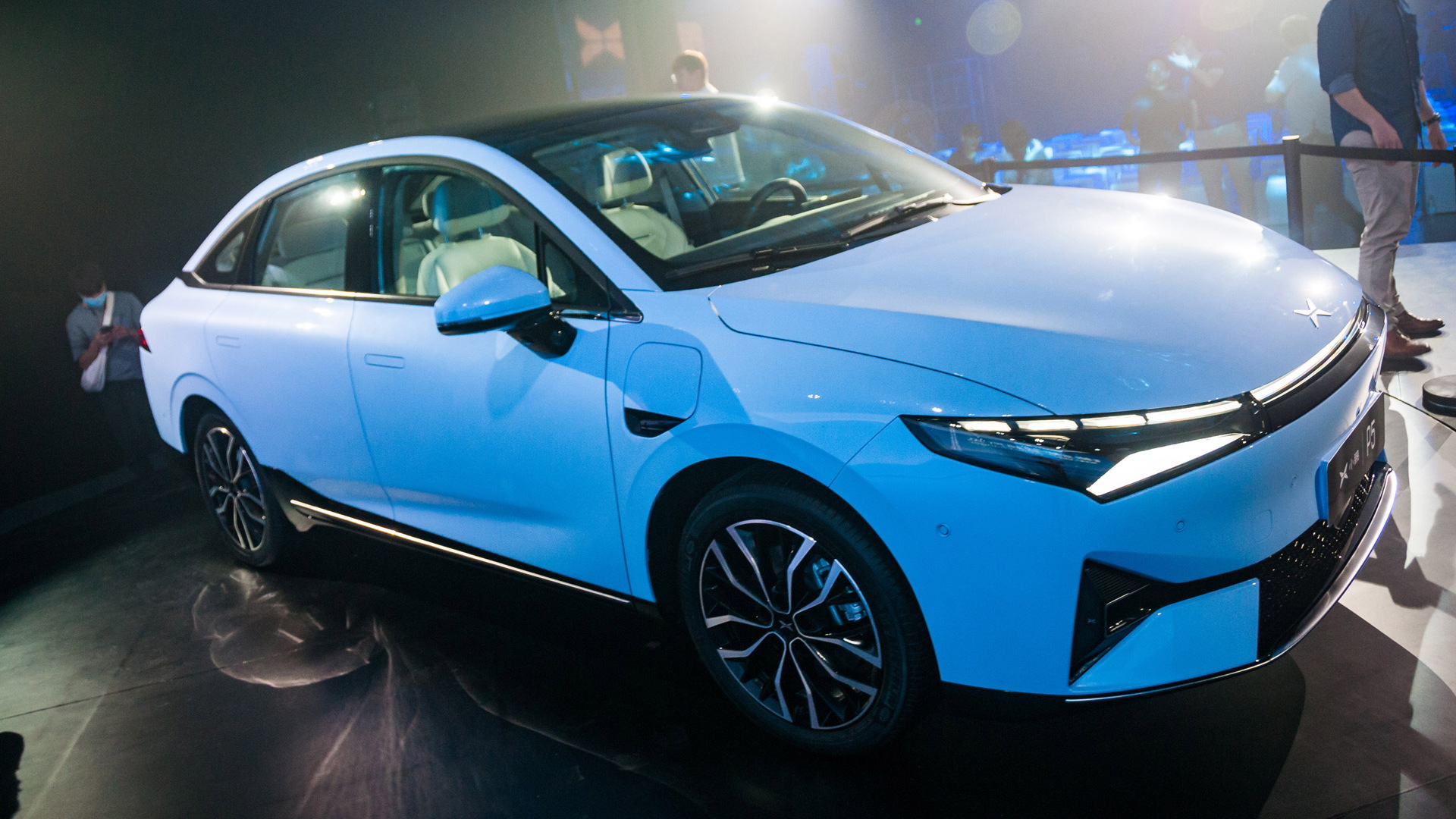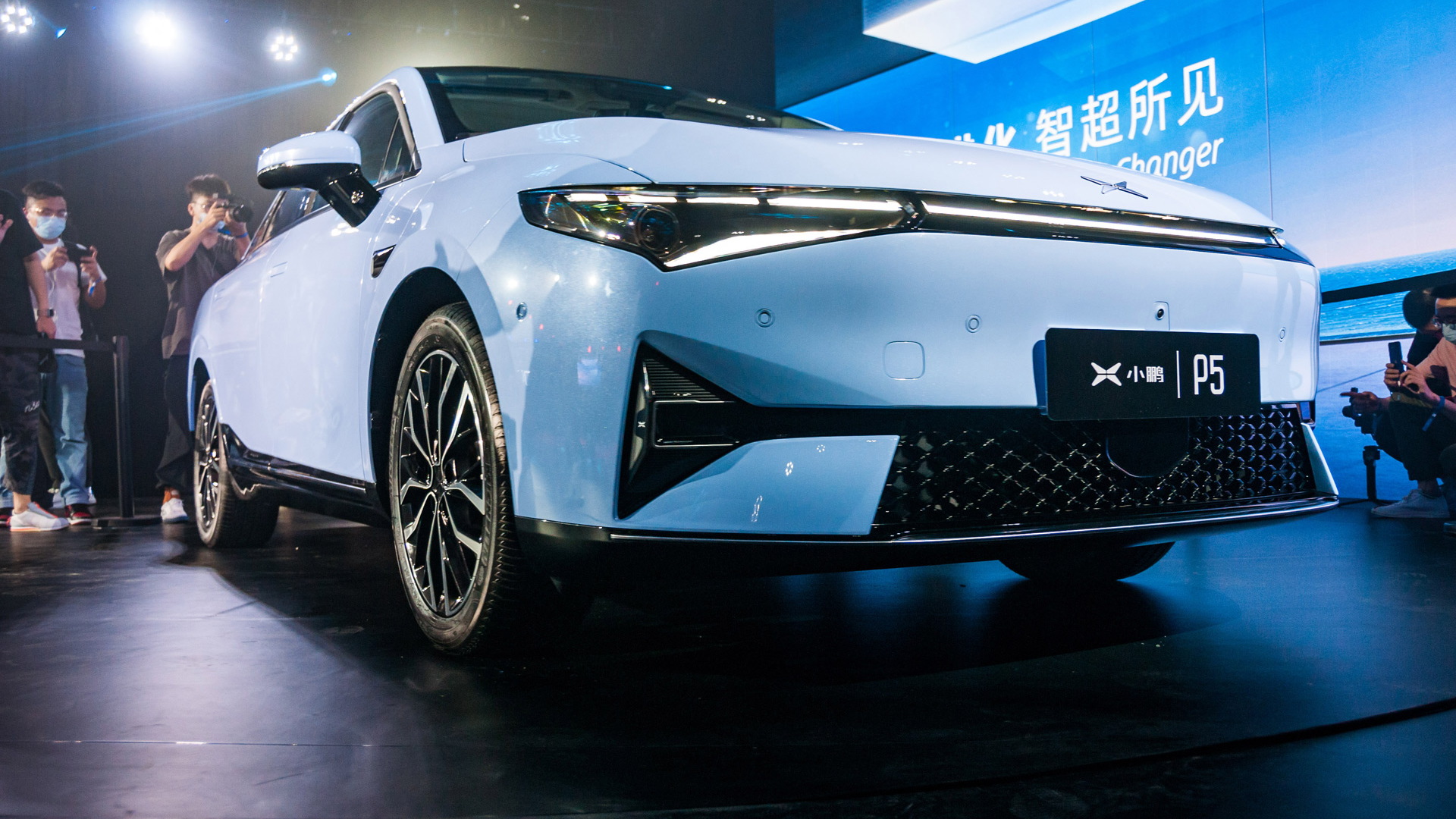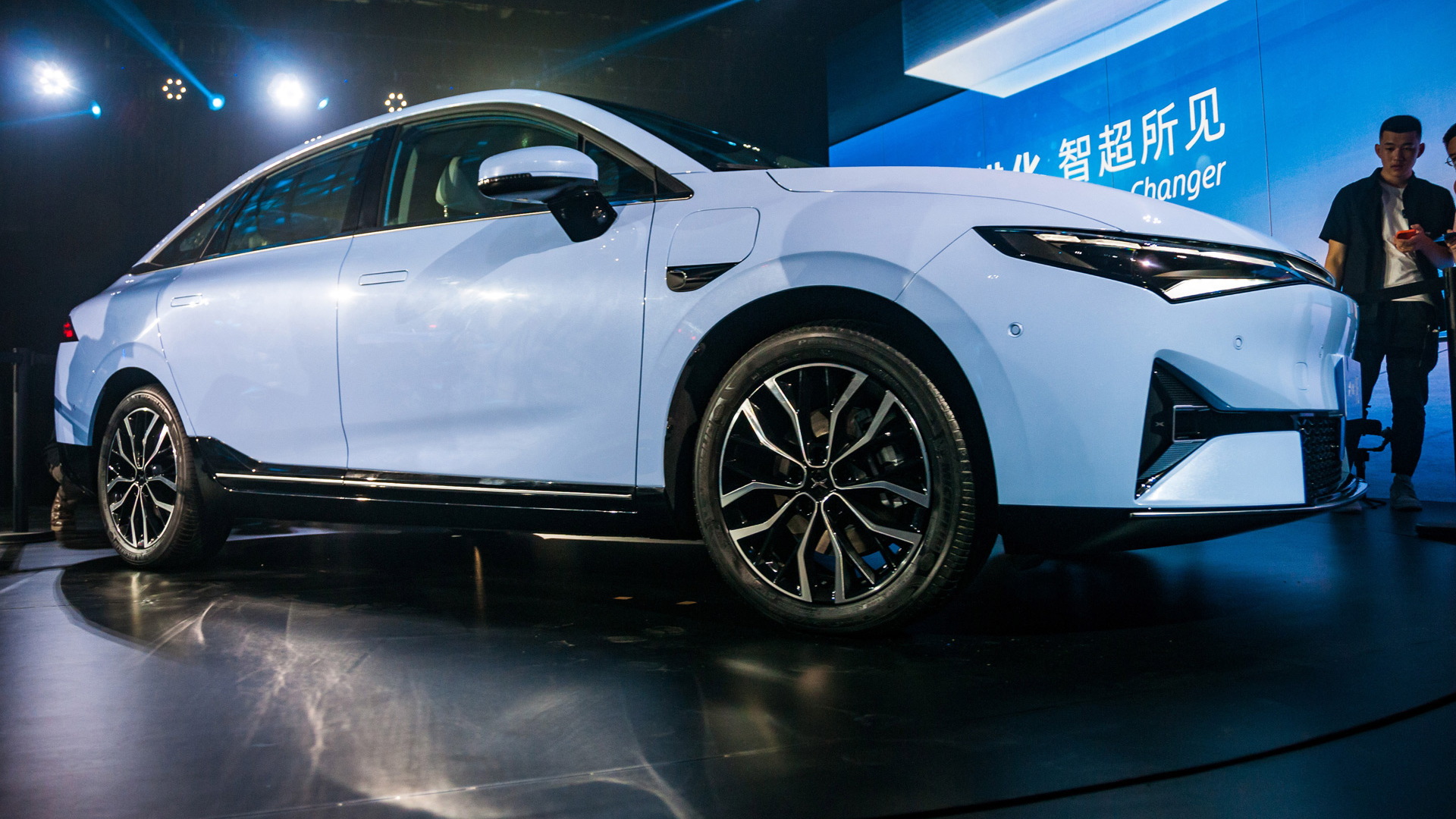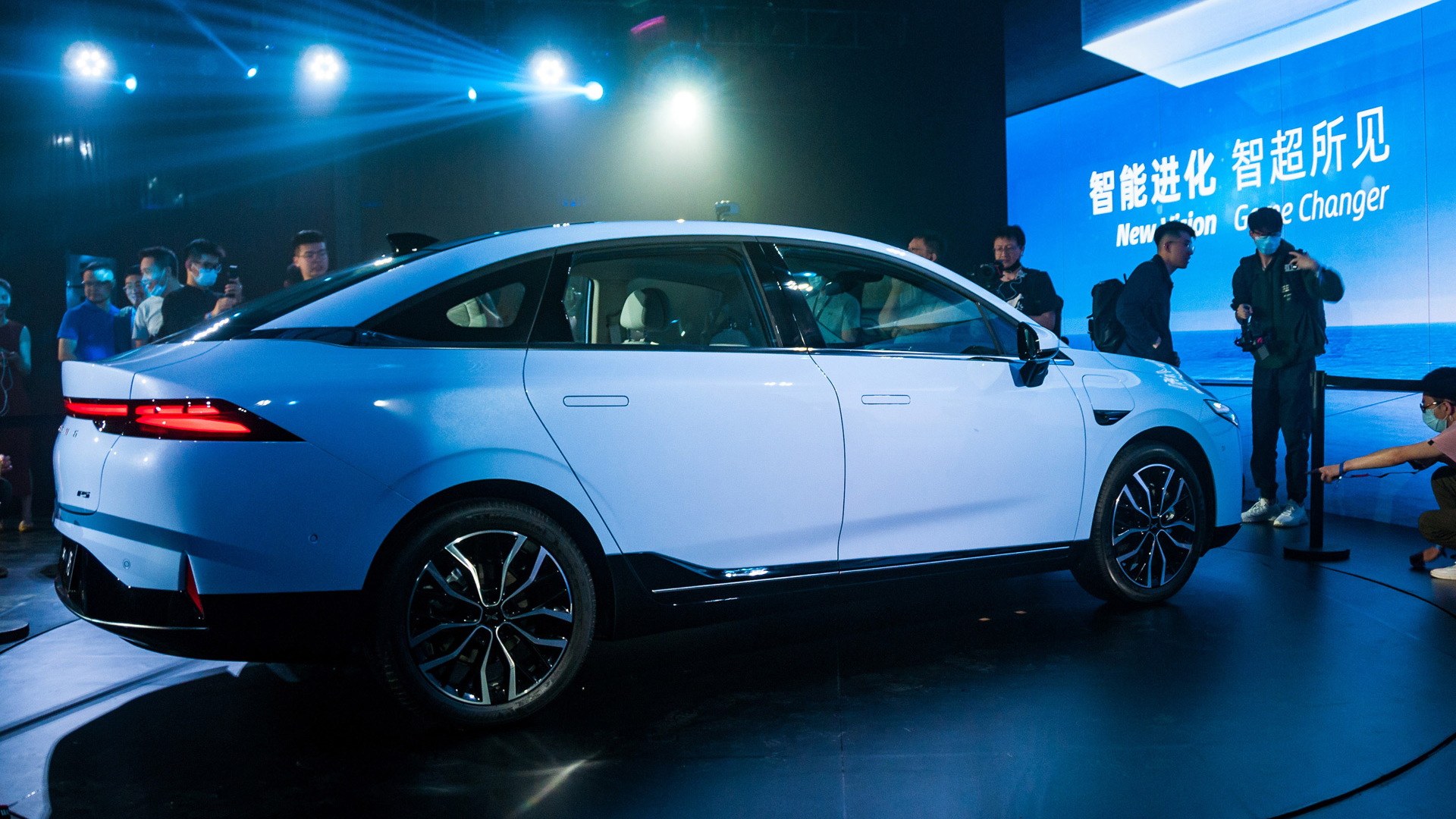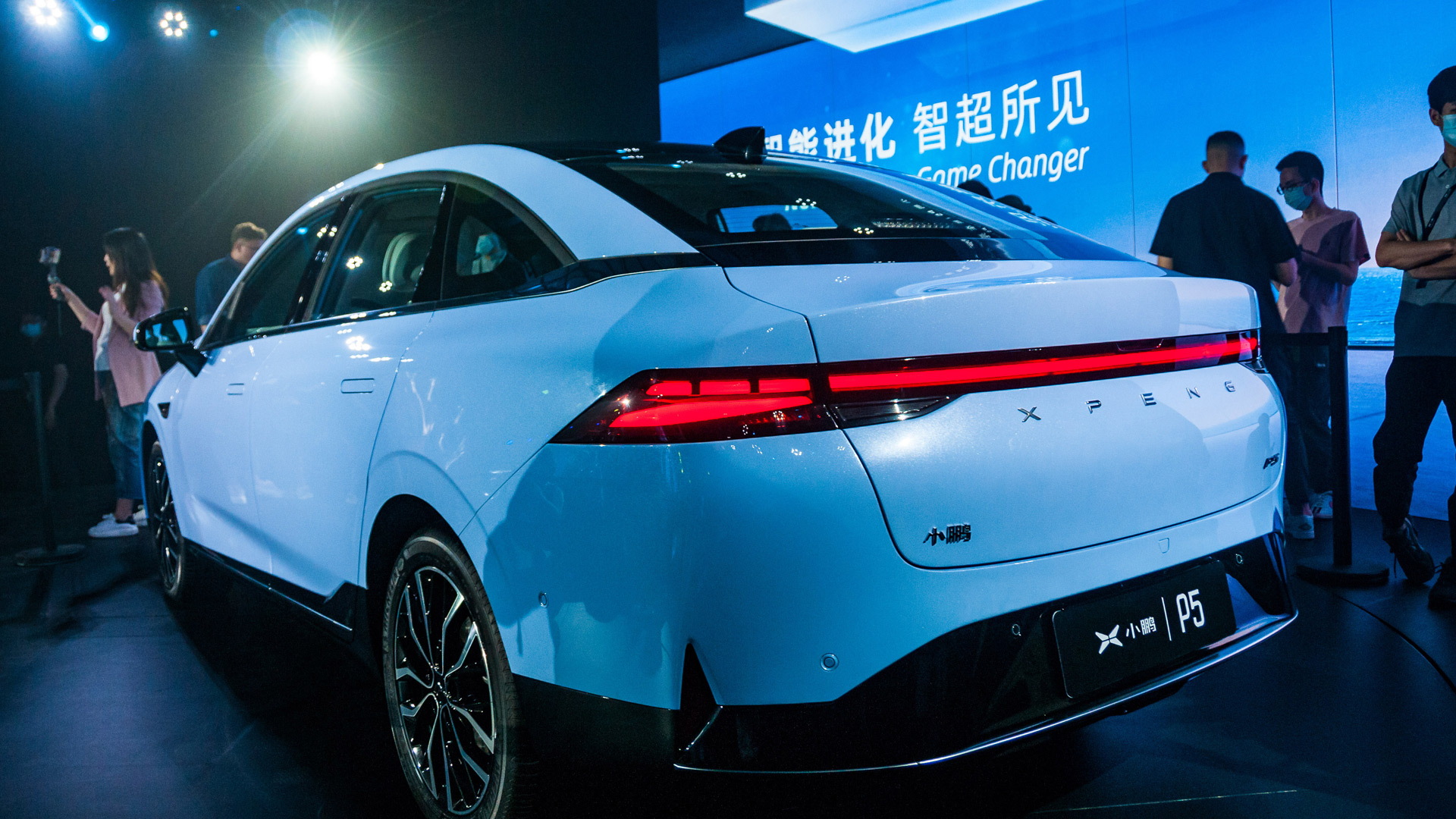Chinese automaker Xpeng in April revealed its third vehicle, a battery-electric compact sedan not unlike the Tesla Model 3.
Called the P5, the new sedan is a smaller sibling to Xpeng's P7 which is already on sale in China, and it was shown to the world for the first time on Monday at Auto Shanghai 2021.
While there are many electric vehicles starting to emerge out of China, the Xpeng P5 stands out as being the first production car in the world with a built-in lidar sensor. The P5 has two in fact, one positioned on either side of the front fascia. According to Xpeng, they are able to distinguish between pedestrians, cyclists and scooters, static obstacles, and road works, including in tunnels and during night driving and poor weather.
Lidar works similar to radar but uses laser light pulses to gauge the physical environment, as opposed to radio waves in the case of radar. Most companies developing self-driving systems plan to use lidar in combination with other types of sensors, though Tesla and its CEO Elon Musk have dismissed the technology, claiming it's a waste of money. Instead, Tesla will rely on cameras, radar, and other sensors.

2022 Xpeng P5's built-in lidar sensor
One of the biggest issues has been cost. Not long ago, a lidar sensor cost about $75,000. Prices have come down in recent years, though, to the point the technology is now commercially viable for cars. Volvo has said its next-generation XC90 due in 2022 will also feature built-in lidar.
In the case of the P5, the lidar sensors are used by a suite of electronic driver-assist features grouped under the Xpilot banner. One of these features is Navigation Guided Pilot (NGP), which Xpeng in March demonstrated over 1,800 miles of Chinese highways using the P7 sedan. After compiling the results, the company found that the system required on average just 0.71 corrections per 62 miles.

Xpeng P7 self-driving car trial - March 2021
The version of NGP debuting in the P5 is even more advanced. According to Xpeng, it will function in urban environments, allowing for lane changes, automatic following, and recognition of speed limit and traffic light information.
“Each new Xpeng model aims for a new high in technology, and the P5 is our most advanced and technically ambitious model yet,” He Xiaopeng, Xpeng's chairman and CEO, said in a statement.
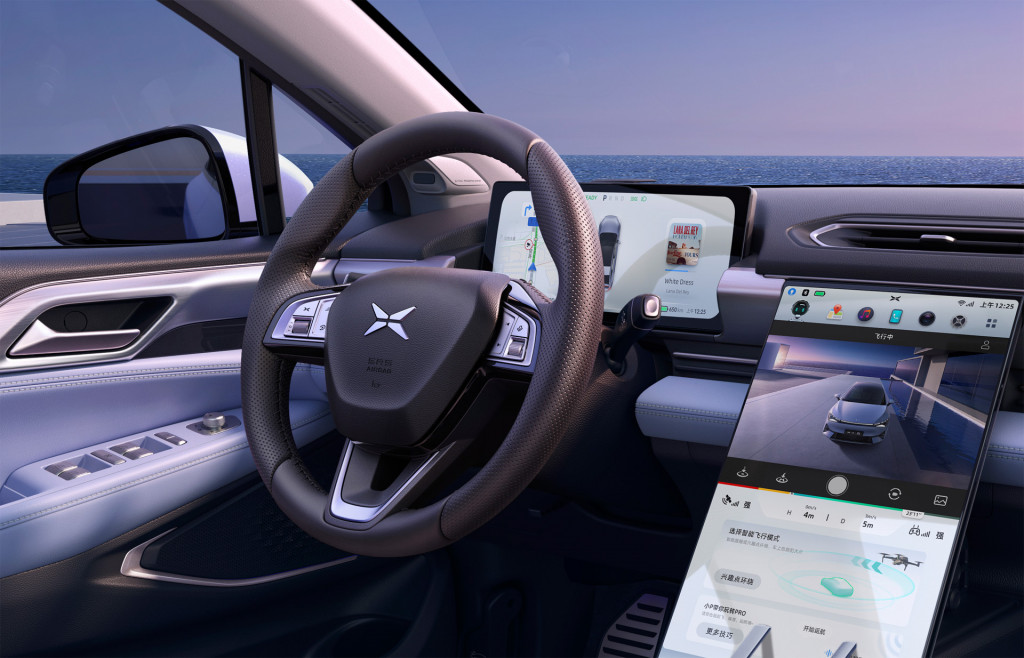
2022 Xpeng P5
Xpeng is saving the P5's powertrain details until close to the market launch later this year, but as a gauge, the larger P7's range-topping powertrain generates 430 hp and 483 lb-ft of torque from a dual-motor system. The biggest battery is a 80.9-kilowatt-hour unit.
For more Shanghai auto show news, head to our dedicated hub.
